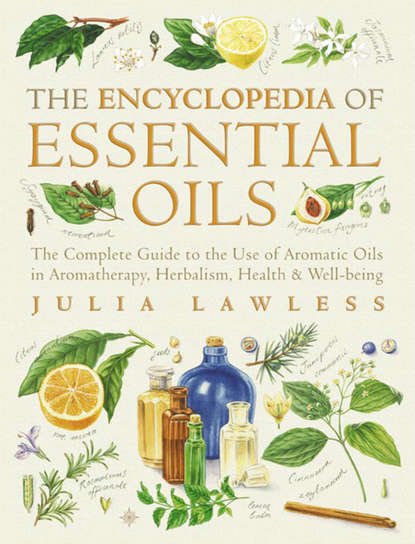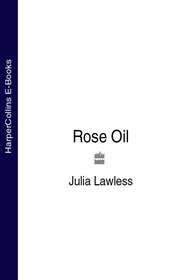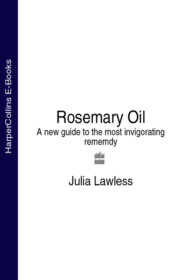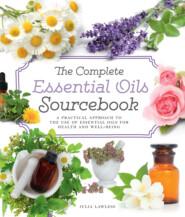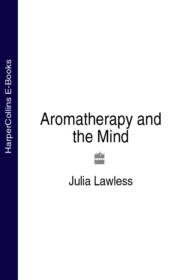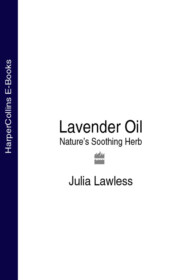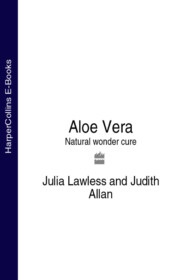По всем вопросам обращайтесь на: info@litportal.ru
(©) 2003-2024.
✖
Encyclopedia of Essential Oils: The complete guide to the use of aromatic oils in aromatherapy, herbalism, health and well-being.
Настройки чтения
Размер шрифта
Высота строк
Поля
SAFETY DATA Extremely toxic. ‘The oil has powerful therapeutic effects, and it can be considered harmful to the human organism even when used in very small doses … should not be used in therapy, either internally or externally.’
AROMATHERAPY/HOME USE None.
OTHER USES Used in pharmaceuticals in minute amounts for its therapeutic properties.
BORNEOL (#ulink_750c3ef8-6b5b-5ec1-922f-bf2e647b9fcd)
Dryobalanops aromatica
FAMILY Dipterocarpaceae
SYNONYMSD. camphora, Borneo camphor, East Indian camphor, Baros camphor, Sumatra camphor, Malayan camphor.
GENERAL DESCRIPTION The camphora tree grows to a great height, a majestic tree often over 25 metres high, with a thick trunk up to 2 metres in diameter. Borneol is a natural exudation found beneath the bark in crevices and fissures of some mature trees (about 1 per cent); young trees produce only a clear yellow liquid known as ‘liquid camphor’.
DISTRIBUTION Native to Borneo and Sumatra.
OTHER SPECIES To be distinguished from the Japanese or Formosa type of camphor, more commonly used in Europe, which is relatively toxic. See also Botanical Classification (#litres_trial_promo) section.
HERBAL/FOLK TRADITION Borneol has long been regarded as a panacea by many Eastern civilizations, especially in ancient Persia, India and China. It was used as a powerful remedy against plague and other infectious diseases, stomach and bowel complaints. In China it was also used for embalming purposes. ‘It is mentioned by Marco Polo in the thirteenth century and Camoens in 1571 who called it the “balsam of disease”.’
It is valued for ceremonial purposes in the east generally, and in China particularly for funeral rites. Its odour repels insects and ants, and it is therefore highly regarded as timber for the construction of buildings.
ACTIONS Mildly analgesic, antidepressant, antiseptic, antispasmodic, antiviral, carminative, rubefacient, stimulant of the adrenal cortex, tonic (cardiac and general).
EXTRACTION The borneol is collected from the tree trunk in its crude crystalline form (the natives test each tree first by making incisions in the trunk to detect its presence). The so-called ‘oil of borneol’ is extracted by steam distillation of the wood.
CHARACTERISTICS Watery white to viscous black oil depending upon the amount of camphor which it contains, with a distinctive, sassafras-like, camphoraceous odour.
PRINCIPAL CONSTITUENTS The crude is made up of mainly cl-borneol which is an alcohol, not a ketone (like Japanese camphor). The oil contains approx. 35 per cent terpenes: pinene, camphene, dipentene; 10 per cent alcohols: d-borneol, terpineol; 20 per cent sesquiterpenes, and 35 per cent resin.
SAFETY DATA Non-toxic, non-sensitizing, dermal irritant in concentration.
AROMATHERAPY/HOME USE
Skin Care: Cuts, bruises, insect repellent,
Circulation Muscles And Joints: Debility, poor circulation, rheumatism, sprains.
Respiratory System: Bronchitis, coughs.
Immune System: Colds, fever, ‘flu and other infectious diseases.
Nervous System: Nervous exhaustion, stress-related conditions, neuralgia.
OTHER USES It is used to scent soap in the East but is still relatively unknown in the West in pharmaceutical and perfumery work. In China and Japan it is used for making varnish and ink; also asa dilutant for artists’ colours. Mainly used for ritual purposes in the East.
BORONIA (#ulink_6b7ef7d3-1eb8-5b80-a0e7-11b7af5f4268)
Boronia megastigma
FAMILY Rutaceae
SYNONYM Brown boronia.
GENERAL DESCRIPTION A bushy evergreen shrub, up to 2 metres high, which bears an abundance of fragrant, nodding flowers with an unusual colouring – the petals are brown on the outside, yellow on the inside. Often grown as an ornamental shrub in gardens.
DISTRIBUTION Native to Western Australia; grows wild all over west and south west Australia.
OTHER SPECIES There are over fifteen species of boronia found in Western Australia; B. megastigma is one of the most common and the only one used for its perfume; other types smell of sarsaparilla, lemons or roses! Boronia is botanically related to the citrus tree.
HERBAL/FOLK TRADITION ‘A botanist in the Victorian era suggested this species would be suitable for graveyard planting because of its dark flowers!’
ACTIONS Aromatic.
EXTRACTION A concrete and absolute by the enfleurage method or petroleum-ether extraction, from the flowers. An essential oil is also produced in small quantities by steam distillation.
CHARACTERISTICS The concrete is a dark green butterlike mass with a beautiful warm, woody-sweet fragrance; the absolute is a green viscous liquid with a fresh, fruity-spicy scent and a rich, tenacious, floral undertone. It blends well with clary sage, sandalwood, bergamot, violet, immortelle, costus, mimosa and other florals.
PRINCIPAL CONSTITUENTS Notably ionone; also eugenol, triacontane, phenols, ethyl alcohol and ethyl formate, among others.
SAFETY DATA Prohibitively expensive and therefore often adulterated.
AROMATHERAPY/HOME USE Perfume
OTHER USES The absolute is used in high-class perfumery work, especially florals. Used in specialized flavour work, especially rich fruit products.
BROOM, SPANISH (#ulink_61822943-f6fd-52e7-b4be-ca4863cfa568)
Spartium junceum
FAMILY Fabaceae (Leguminosae).
SYNONYMSGenista juncea, genista, weavers broom, broom (absolute), genet (absolute).
GENERAL DESCRIPTION A decorative plant, often cultivated as an ornamental shrub, up to 3 metres high with upright woody branches and tough flexible stems. It has bright green leaves and large, yellow, pea-like fragrant flowers, also bearing its seeds in pods or legumes.
DISTRIBUTION Native to southern Europe, especially southern Spain and southern France; mainly cultivated in Spain, France, Italy and USA (as a garden shrub). The absolute is produced in Southern France.
OTHER SPECIES Closely related to dyer’s greenweed (Genista tinctoria) and the common or green broom (Sarothamnus scoparius or Cytisus scoparius). There are also several other related species of broom, which are rich in their folk tradition.
Broom
HERBAL/FOLK TRADITION The twigs and bark have been used since ancient times to produce a strong fibre which can be made into cord or a coarse cloth. The branches were also used for thatching, basketwork, fencing and, of course, for making brooms. Spanish broom has similar therapeutic properties to the common broom, which is still current in the British Herbal Pharmacopoeia for cardiac dropsy, myocardial weakness, tachycardia and profuse menstruation. However, the Spanish broom is said to be five to six times more active than the common broom, and even that must be used with caution by professional herbalists due to the strength of the active ingredients: ‘A number of cases of poisoning have occurred from the substitution of the dried flowers of Spartium for those of true Broom.’
ACTIONS Antihaemorrhagic, cardioactive, diuretic, cathartic, emmenagogue, narcotic, vasoconstrictor.
EXTRACTION An absolute is obtained by solvent extraction from the dried flowers.





